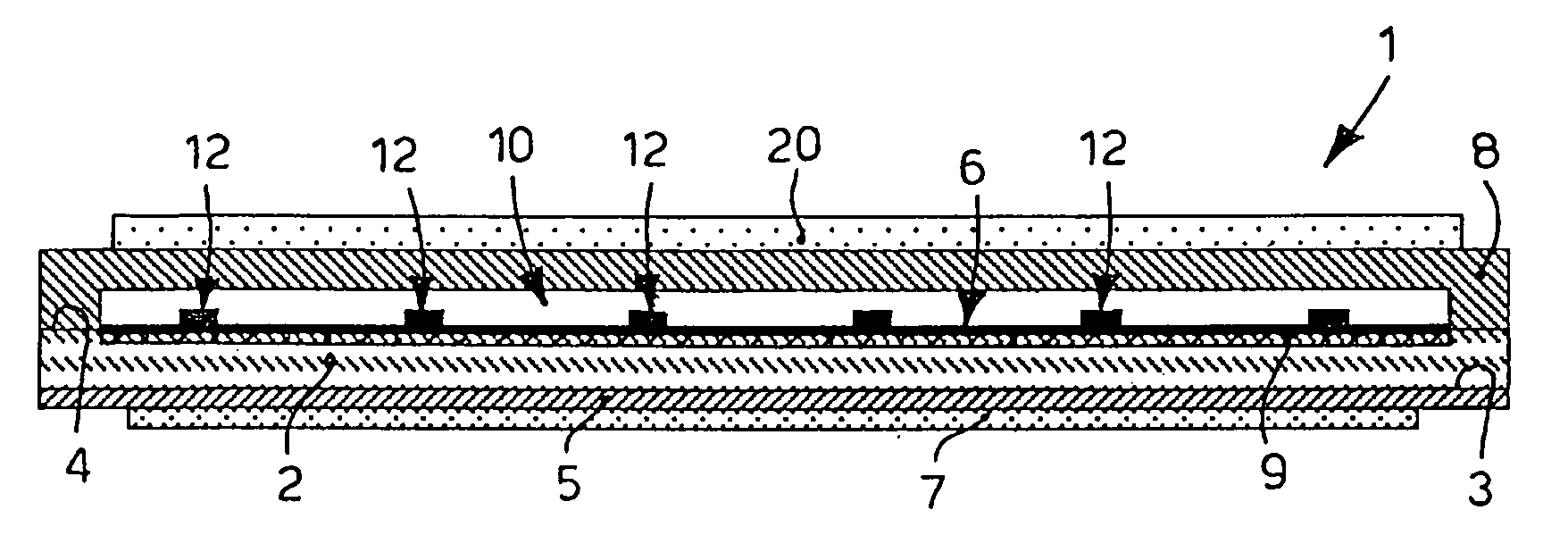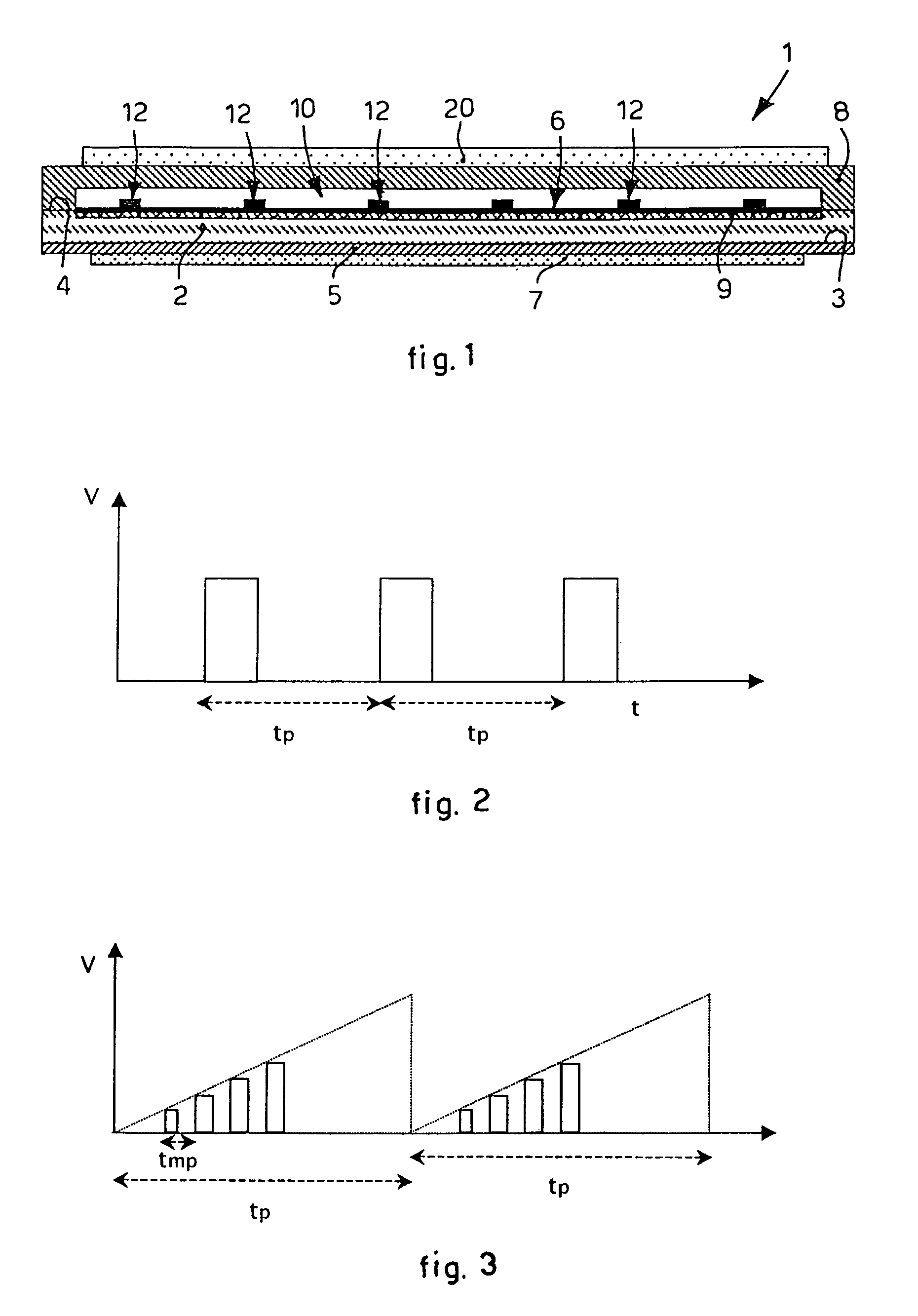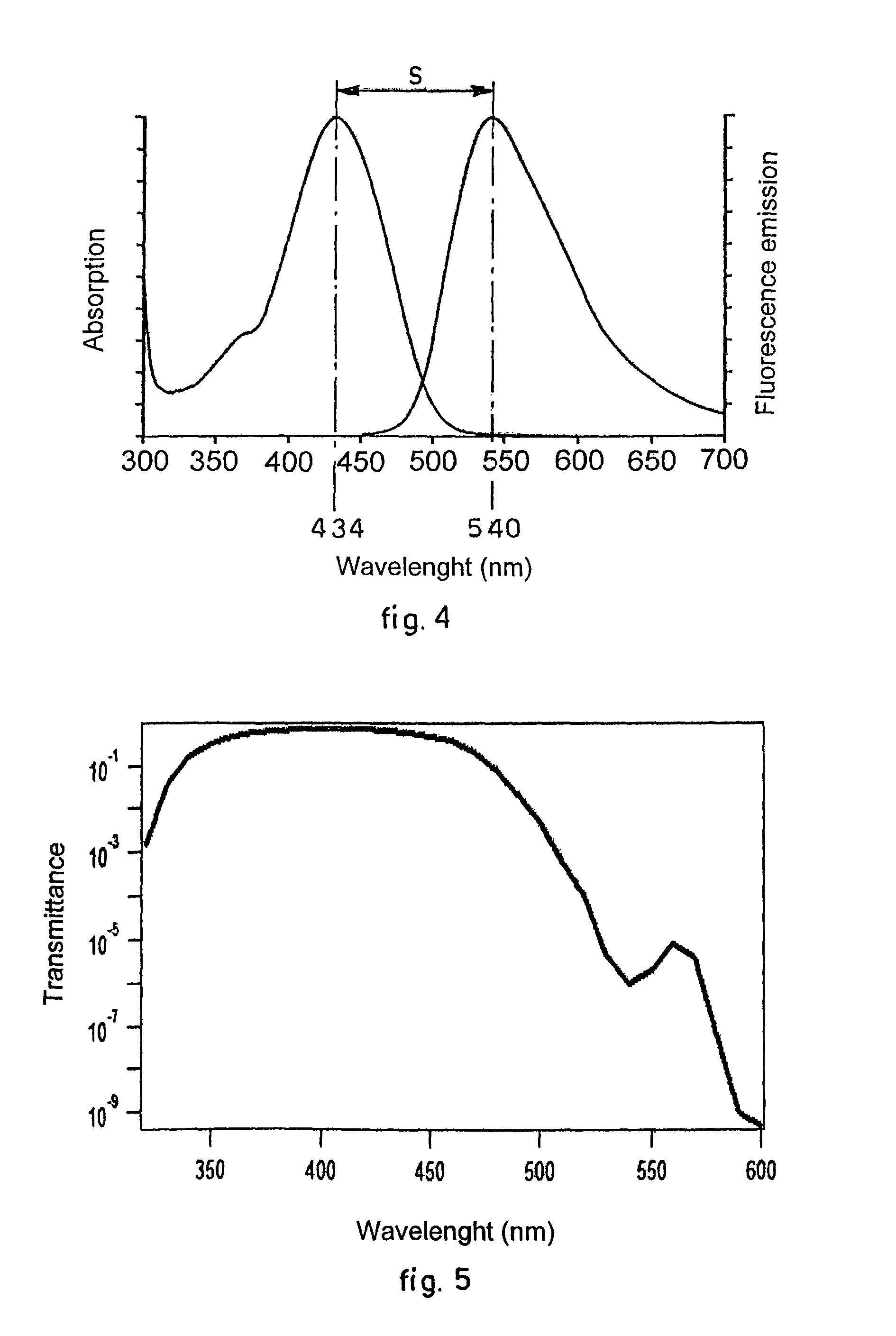Device to detect analytes in a biological sample
a biological sample and device technology, applied in the field of devices to detect analytes in biological samples, can solve the problem of inability to detect the latter without the appropriate use of optical devices, and achieve the effect of maximizing the detection sensitivity
- Summary
- Abstract
- Description
- Claims
- Application Information
AI Technical Summary
Benefits of technology
Problems solved by technology
Method used
Image
Examples
Embodiment Construction
[0034]With reference to FIG. 1, in a preferred form of embodiment, a device 1 to detect analytes in a biological sample, hereafter for brevity called biochip, comprises a transparent substrate 2 having a first surface 3, or surface which is lower during use, on which a thin film of transparent conductive material is applied, not shown in the drawings. The biochip 1 also comprises an optical source 7 in direct contact with the film of transparent conductive material and a microfluid circuit or system 8, suitable to contain the sample to be analyzed and the markers, for example fluorophores, to detect the relative analyte in direct contact with a second, upper surface 4 of the transparent substrate 2.
[0035]On the opposite side of the optical source a detector device 20 is disposed, described in more detail hereafter.
[0036]The optical source 7, in a preferred form of embodiment of the biochip 1 according to the present invention, is made using thin organic film technology on a transpar...
PUM
| Property | Measurement | Unit |
|---|---|---|
| wavelengths | aaaaa | aaaaa |
| wavelength | aaaaa | aaaaa |
| wavelength | aaaaa | aaaaa |
Abstract
Description
Claims
Application Information
 Login to View More
Login to View More - R&D
- Intellectual Property
- Life Sciences
- Materials
- Tech Scout
- Unparalleled Data Quality
- Higher Quality Content
- 60% Fewer Hallucinations
Browse by: Latest US Patents, China's latest patents, Technical Efficacy Thesaurus, Application Domain, Technology Topic, Popular Technical Reports.
© 2025 PatSnap. All rights reserved.Legal|Privacy policy|Modern Slavery Act Transparency Statement|Sitemap|About US| Contact US: help@patsnap.com



